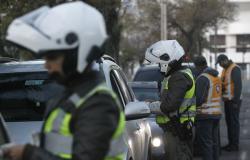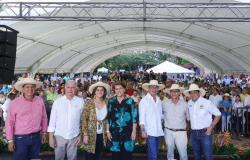However, and seen from the general public, communal and environmental hygiene in the district has remained stable in recent years. What does not obscure the fact that in peripheral areas of the cities of Santiago de Cuba and Palma Soriano, mainly, the panorama is not rosy, while the micro-landfills and the stench grow, partly due to social indiscipline, partly due to cycles. extremely extended collection points.
Everyone’s business
Alexander Barrios Cabrera, a resident of the peripheral neighborhood of La Risueña, in Ciudad Héroe, complains because “the garbage truck hasn’t passed for more than two months and we can’t accumulate it in the houses, that’s why the corners are filled with “waste”, another local resident alludes that “the wheelbarrow drivers come from time to time and move the garbage to the pastures and burn it there.”
Situations like this occur in many areas of the José Martí Urban Center, and in specific places in the residential districts of Sueño and Vista Alegre.
Eliécer Moreno González, in Palma Soriano, reported that “around the railway line, on the central Libertad Avenue, people dump garbage all the time because the cycles are very long, but today they collect it and at night it returns The dirt”. Yolanda González Martínez, from San Luis, appreciates the efforts of the workers “but sometimes the garbage accumulates too close to our homes.”
Something similar happens very close to the center of San Luis, where people dump everything from dead animals to debris in “a corner where the street sweepers themselves have a point where they concentrate the waste from their areas to later be collected by the car; Rodents, bad odors, and indiscipline are rampant here; “It is a garbage dump that, like the phoenix, is reborn from the ashes,” denounced Gisela Rodríguez Méndez.
The contrasts between the main arteries and public spaces of the cities of Santiago de Cuba, Palma Soriano, Contramaestre, San Luis and La Maya, -where in honor of the truth, cleanliness prevails-, and the more distant neighborhoods where micro-garbage dumps proliferate-, They occur not only in the periodicity of the collection cycles, the presence of sweepers, inspectors, they also lie, and to a high degree, in the individual and collective responsibility of citizens.
It is in Palma Soriano, the second most populated municipality in the province and which generated 8,000 m³ of solid waste in 2023, where the situation becomes more complex, of nine vehicles, “only one is working, along with three others rented to Empresa Pecuaria », said Sergio Macías Pérez, deputy director of the Budgeted Unit of Communal Services of the territory.
According to Ángel Soulari Quesada, Deputy Director of Communal and Environmental Hygiene of the Provincial Directorate of Communal Services, “of the 120 pieces of automotive equipment, only 48 are in operation, the remaining 64 are in the workshops, this is one of the main difficulties of our entity, coupled with the availability of fuel. We have seven flatbed trucks, 31 are tractors and the same number of specialized collectors, 22 heavy equipment – crane, loader and bulldozer -, 17 dump trucks and a fourth ampliroll.
In the main municipality, collection is carried out daily in the main arteries. The same happens in most municipalities, although each one has its particularities. According to the manager, “in the communal areas, the peripheral popular councils and rural towns, it is done on alternate days, and about 90 percent of the collection is carried out with animal-drawn vehicles hired by the entity.”
These thousands of cubic meters of waste are classified as degradable and non-degradable. The former – peels, plant mass, and other types of organic matter – can be used to produce compost, which is then used as fertilizer. Non-degradable materials – bottles, plastic materials and metals in general – can well be recycled and sold as raw materials, “that constitutes a source of additional income for Communal Services, and it has to be increased in each of the landfills, because it must be burn what cannot be reusable,” said Soulari Quesada.
Communal hygiene is collective hygiene
Roberto Costilla Rivera, for seven years, has been working as a sweeper in the segment from Plaza de la Revolución Antonio Maceo to Terminal Calle 4, “we start in the early morning hours and continue until the afternoon, under the hot sun of this city; It hurts us a lot that some people throw garbage outside the bins, even in front of us and without any kind of consideration.
Alexei Munive Pozo, in office since 1998, thinks something similar, because “many demand and question the cleanliness of the city, but few support effectively; Not because I work on this am I ignorant, those outside their homes who care little about hygiene behave as such. “We work in very difficult conditions, there is a lack of protection means, brushes, but we do it in the best possible way.”
The operators of the collection brigades face waste of all types, under similar working conditions; One of them, contacted by Granma, regrets that “the cleaning and beautification days called by mass organizations do not have the strength of before, and that they contributed significantly to this important action of keeping the environment beautiful.”
With the putting into operation of a batch of hand-pulled carts for waste collection, repaired by the non-state company for the Repair of Industrial and Medical Equipment Oriente Sur (Retos), the work of the sweepers and the cleaning brigades has been humanized. communal hygiene in the main municipality and “the 310 carts that the entire province needs” will be rehabilitated this year, said Carlos Saumell Martínez, president of Retos.
In the hundreds of rural settlements the outlook is more encouraging, not because of their much smaller size, but because of the sense of belonging that their inhabitants have.
“The 306 cooperatives greatly promote the sanitation of the neighborhoods, involving all factors,” said Yuneisi Calunga La O, member of the ANAP Bureau in the province.
The town of Chavecho, in Palma Soriano, although surrounded by sugarcane fields and with the coming and going of the powerful KTP, tractor, poultry and livestock combines, does not stop showing off its best clothes, “volunteer work and sanitation is a principle that “It has been established because everything here has been made by the associates: houses, winery, butcher shop, social circle and our headquarters,” said Odalis Rosales Elías, president of the CPA Juan José Verdecia, with healthy pride.
With admirable zeal, gardeners, workers and park rangers tend to the 204 parks and other public spaces in Santiago – most of them undergoing restoration processes; traditional meeting and relaxation places for grandparents, students, friends and couples.
Santiago de Cuba, every day “more beautiful, hygienic, orderly and disciplined”, is possible and necessary, it deserves the support of the majority, the timely correction of offenders and the generalization of the multiple alternatives that “remove bits of the problems” .






